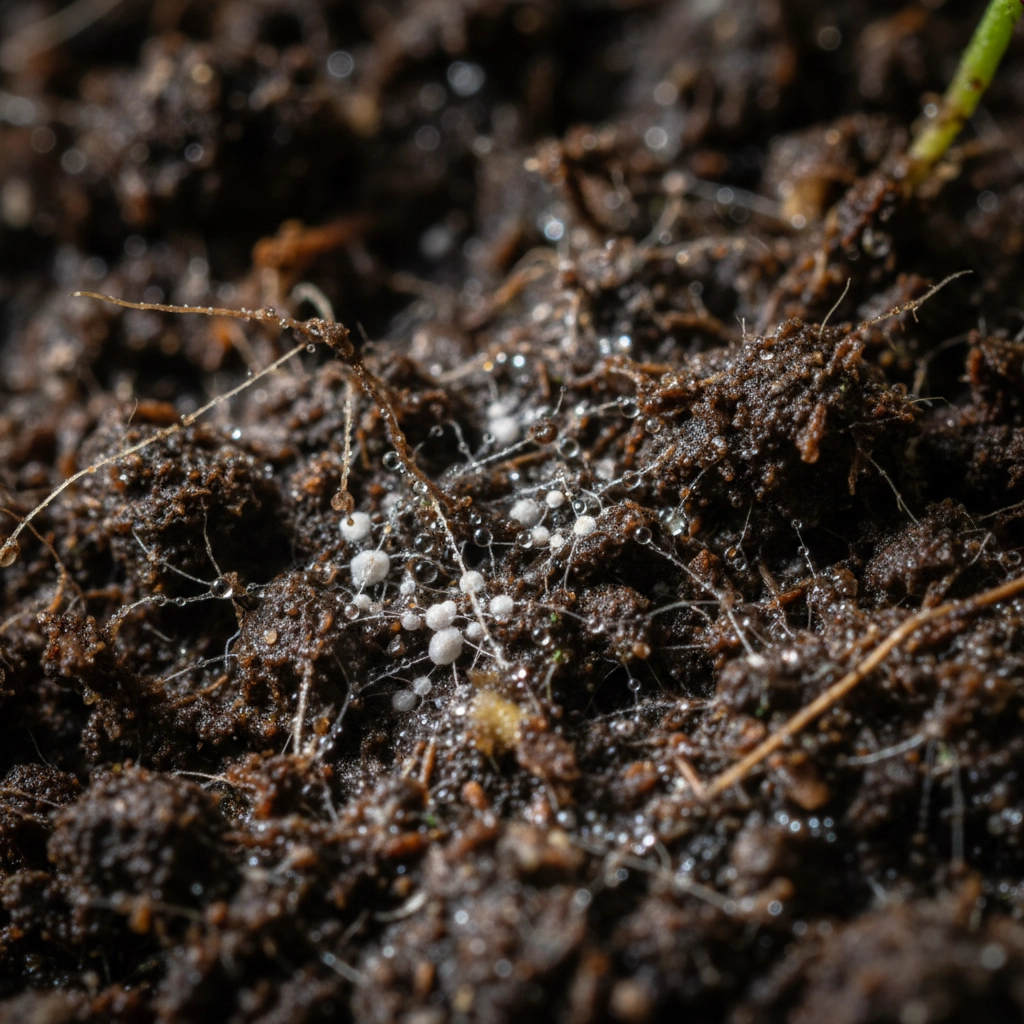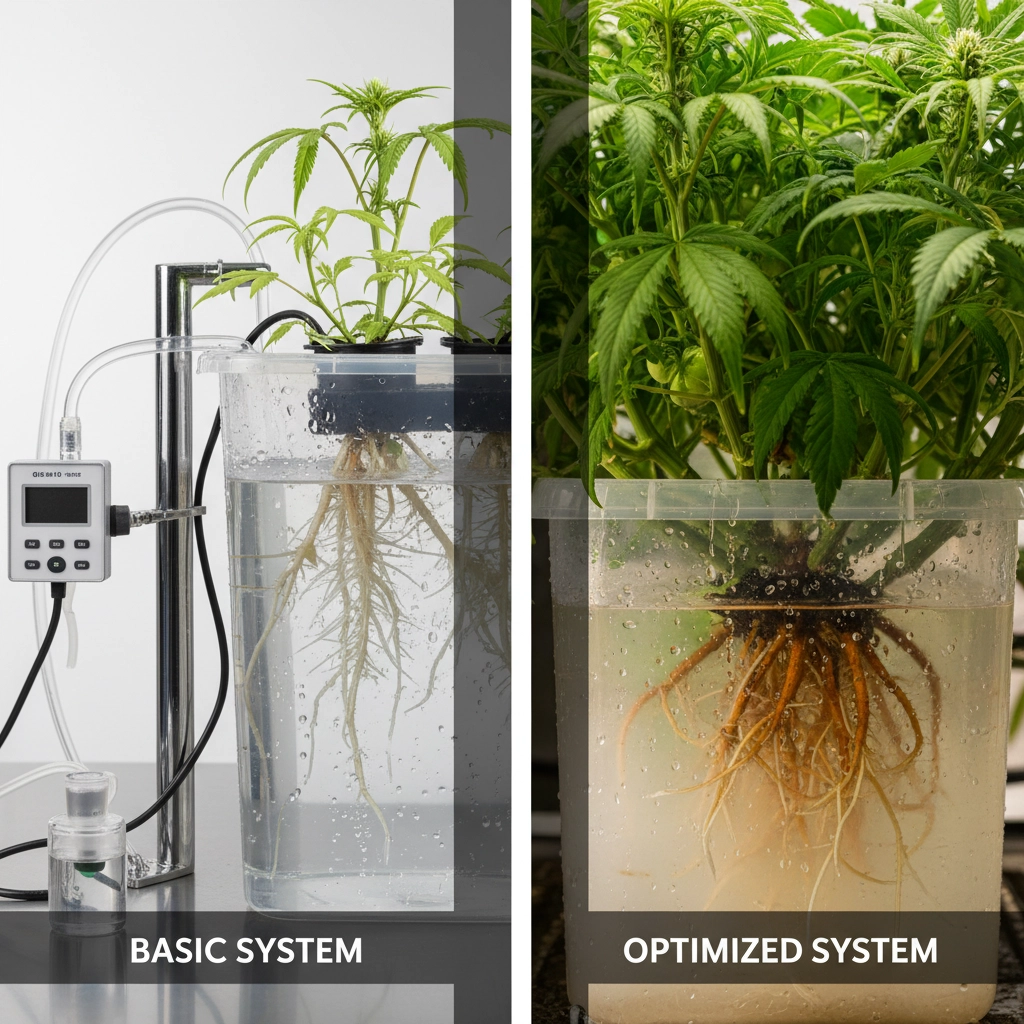Blog
The Nitrogen Cycle Explained: Why Your Garden Needs This Invisible Engine
P
Your garden sits surrounded by an ocean of nitrogen: 78% of the air around your plants consists of this essential element. Yet despite this abundance, your plants might still be nitrogen-starved. This apparent paradox reveals one of nature's most fascinating processes: the nitrogen cycle, an invisible biological engine that transforms unusable atmospheric nitrogen into the forms your plants desperately need to thrive.
Understanding this cycle isn't just academic curiosity: it's the key to unlocking better harvests, healthier plants, and more efficient use of nutrients whether you're growing in soil or running a hydroponic system.
Why Nitrogen Drives Plant Performance
Nitrogen serves as the backbone of plant biology, functioning as a critical component in amino acids, proteins, enzymes, DNA, and RNA. Without adequate nitrogen, plants cannot manufacture the cellular machinery necessary for photosynthesis, growth, and reproduction. The element literally builds the green in your plants: chlorophyll molecules contain nitrogen at their core.
When plants lack sufficient nitrogen, the symptoms become immediately visible. Older leaves turn yellow and drop off as the plant cannibalizes its own tissues to move nitrogen to newer growth. Stems become thin and weak, flowering decreases dramatically, and overall plant size remains stunted. In severe cases, entire crops can fail.
However, balance remains crucial. While nitrogen deficiency cripples growth, excess nitrogen creates its own problems. Over-fertilized plants produce excessive vegetative growth at the expense of flowers and fruits, develop weak cell walls susceptible to disease, and can even become toxic to beneficial soil organisms.
The Atmospheric Nitrogen Problem
Despite being surrounded by nitrogen gas (N₂), plants cannot directly access this atmospheric reservoir. The two nitrogen atoms in N₂ molecules bond so tightly together that plants lack the biochemical tools to break them apart. It's like being surrounded by locked treasure chests without having any keys.
Plants can only absorb nitrogen in specific water-soluble forms: primarily nitrates (NO₃⁻) and ammonium (NH₄⁺). This creates the fundamental challenge that the nitrogen cycle solves: converting abundant but unusable atmospheric nitrogen into the precise chemical forms that plant roots can absorb and utilize.

The Five-Stage Transformation Process
The nitrogen cycle operates through five interconnected stages, each facilitated by different microorganisms living in your growing medium.
1. Nitrogen Fixation
This critical first stage converts atmospheric nitrogen gas into ammonia (NH₃). In natural systems, specialized bacteria called diazotrophs perform this conversion using an enzyme called nitrogenase. These remarkable microorganisms include free-living species like Azotobacter and symbiotic species like Rhizobium that form partnerships with legume plants.
The symbiotic relationship proves particularly fascinating: bacteria living in root nodules of beans, peas, and other legumes fix nitrogen in exchange for sugars from the plant. This explains why crop rotation with legumes naturally enriches soil and why many hydroponic growers incorporate beneficial bacteria inoculants into their systems.
2. Mineralization (Ammonification)
During this stage, organic matter containing nitrogen decomposes, releasing ammonia back into the growing medium. As bacteria and fungi break down dead plant material, animal waste, and other organic compounds, they convert organic nitrogen back into ammonia that plants can potentially use.
This process highlights why compost, worm castings, and other organic amendments prove so valuable: they provide both immediate nutrition and long-term nitrogen release as they decompose.
3. Nitrification
Nitrification transforms ammonia into the forms plants absorb most readily. This two-step process requires two different bacterial groups working in sequence. First, Nitrosomonas bacteria convert ammonia into nitrites (NO₂⁻). Then Nitrobacter bacteria convert those nitrites into nitrates (NO₃⁻).
Both bacterial groups require oxygen to function effectively, which explains why well-aerated growing media produces healthier plants. In hydroponic systems, maintaining dissolved oxygen levels in nutrient solutions supports these beneficial conversions.
4. Assimilation
Plants absorb the nitrates and ammonium produced in earlier stages through their root systems. Inside plant tissues, these nitrogen compounds become incorporated into amino acids, proteins, and other essential molecules. This stage represents the payoff from the entire cycle: unusable atmospheric nitrogen finally becomes part of living plant tissue.
5. Denitrification
The cycle completes when specialized bacteria in oxygen-poor environments convert nitrates back into nitrogen gas, which returns to the atmosphere. While this might seem counterproductive, denitrification serves important ecological functions by preventing excessive nitrogen accumulation that could contaminate water supplies.
In growing systems, preventing waterlogged conditions minimizes unwanted denitrification that could rob plants of available nitrogen.
Hydroponics and the Best Nutrients for Optimal Nitrogen Cycling
Hydroponic systems present unique opportunities and challenges for nitrogen management. Without soil microorganisms to facilitate natural cycling, hydroponic growers must either provide nitrogen in immediately available forms or introduce beneficial microbes to their systems.
The best nutrients for hydroponics typically provide nitrogen in multiple forms: nitrates for immediate uptake and ammonium for sustained release. However, adding microbial inoculants to hydroponic systems can recreate many benefits of the natural nitrogen cycle.
Products like Mykos mycorrhizae inoculant introduce beneficial fungi that form symbiotic relationships with plant roots, improving nutrient uptake efficiency and supporting healthier root development. These microorganisms work synergistically with nitrogen-cycling bacteria to create more robust growing systems.

Supporting Your System's Nitrogen Engine
Whether growing in soil or hydroponics, several strategies optimize nitrogen cycling in your garden:
Maintain Proper Aeration: Both nitrifying bacteria and plant roots require oxygen. In soil, this means avoiding compaction and incorporating organic matter. In hydroponics, maintain adequate dissolved oxygen levels in nutrient solutions.
Feed the Microbes: Beneficial bacteria need carbon sources to thrive. Molasses, kelp meal, and other organic supplements provide food for nitrogen-cycling microorganisms.
Monitor pH Levels: Nitrifying bacteria function optimally in slightly acidic to neutral conditions (pH 6.5-7.5). Products like Drops of Balance help maintain optimal pH while providing essential trace minerals that support microbial activity.
Use Compost Tea Brewers: These systems create oxygen-rich environments where beneficial bacteria multiply rapidly. Regular applications of freshly brewed compost tea introduce diverse microbial communities that support all stages of nitrogen cycling.
Temperature Management: Microbial activity slows significantly in cold conditions. Maintaining growing medium temperatures between 65-75°F optimizes bacterial function.
Troubleshooting Nitrogen Cycle Disruptions
Several common problems can interrupt efficient nitrogen cycling:
Antibiotic Residues: Chemical fertilizers and pesticides can harm beneficial bacteria. Organic growing methods and microbial inoculants help restore bacterial populations.
pH Imbalances: Extremely acidic or alkaline conditions inhibit nitrifying bacteria. Regular pH monitoring and adjustment maintain optimal conditions.
Waterlogging: Saturated growing media creates anaerobic conditions that favor denitrification over nitrification. Proper drainage and aeration prevent this issue.
Nutrient Imbalances: Excessive phosphorus can inhibit nitrogen fixation, while insufficient carbon limits bacterial growth. Balanced nutrition supports the entire microbial ecosystem.
Maximizing Your Garden's Nitrogen Potential
The nitrogen cycle represents one of nature's most elegant solutions: transforming unusable atmospheric nitrogen into the building blocks of plant life through the coordinated efforts of microscopic organisms. By understanding and supporting this invisible engine, gardeners can achieve better harvests while reducing dependence on synthetic fertilizers.
Whether you're growing vegetables in raised beds or running a sophisticated hydroponic operation, the principles remain the same: support beneficial microorganisms, maintain proper environmental conditions, and provide balanced nutrition that feeds both plants and the microbial communities that serve them.
Ready to optimize your garden's nitrogen cycling? Explore our complete selection of microbial inoculants, pH management tools, and organic growing supplies to build a thriving ecosystem that naturally supports plant health and productivity.
